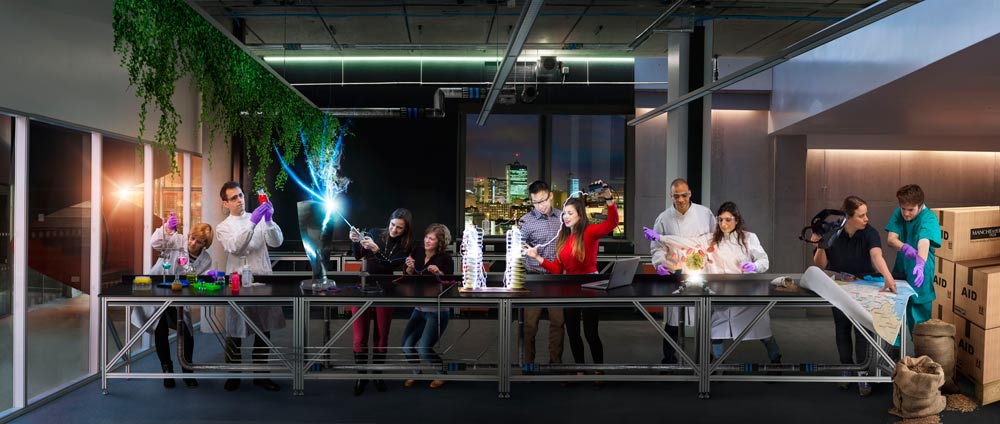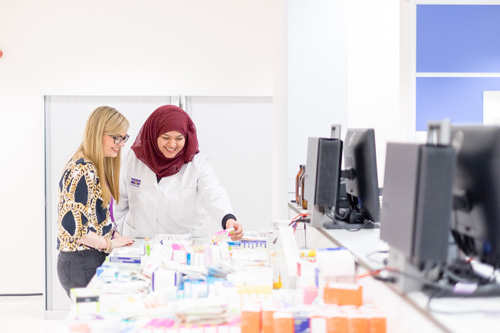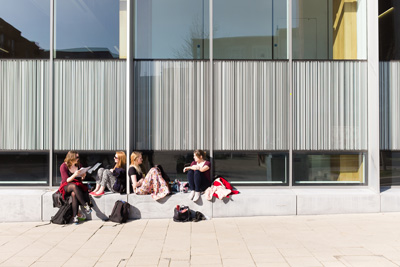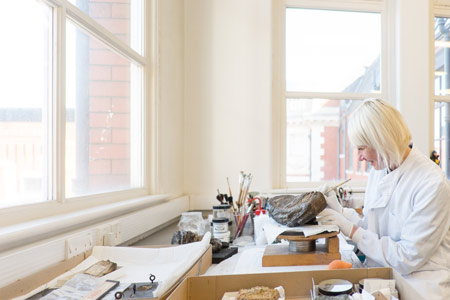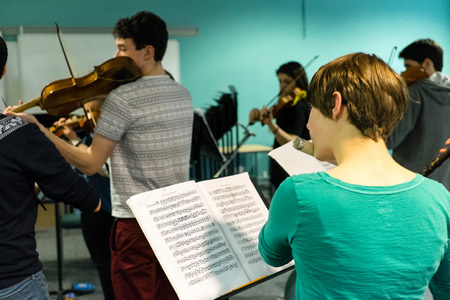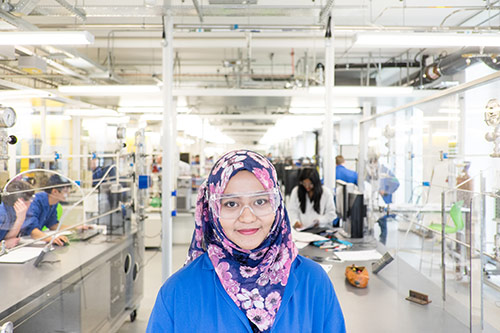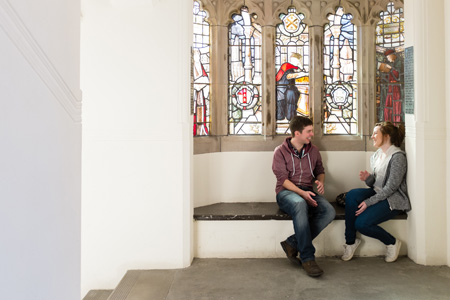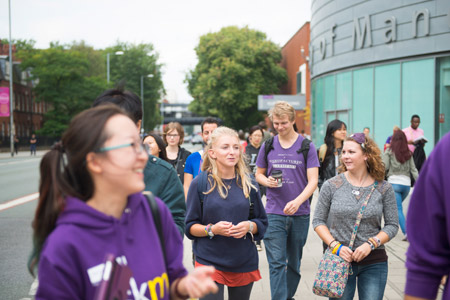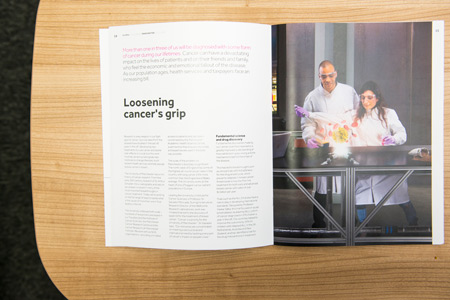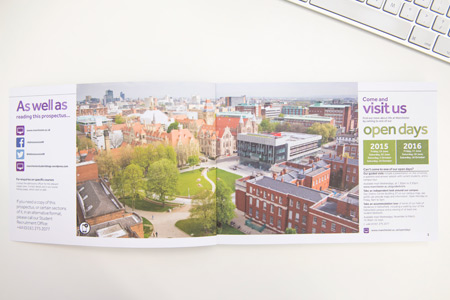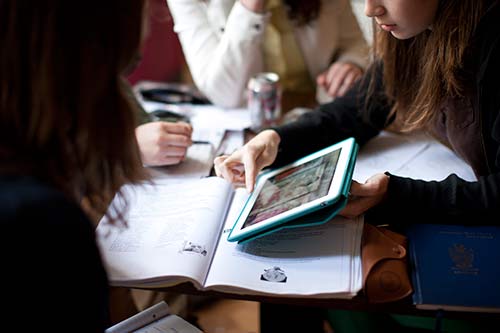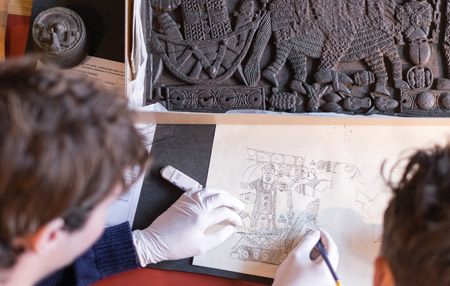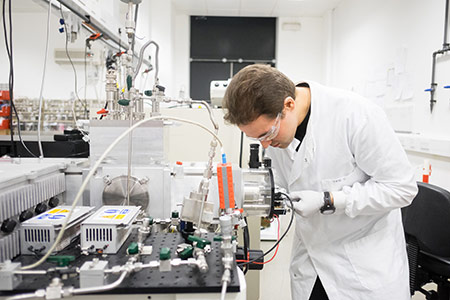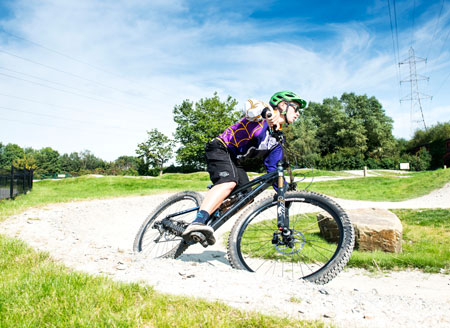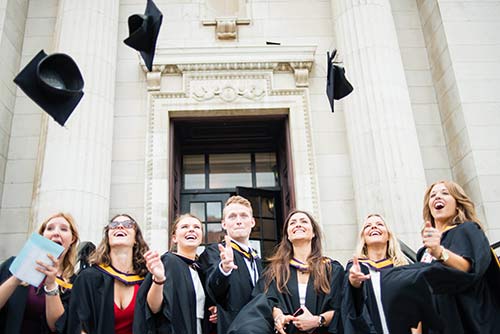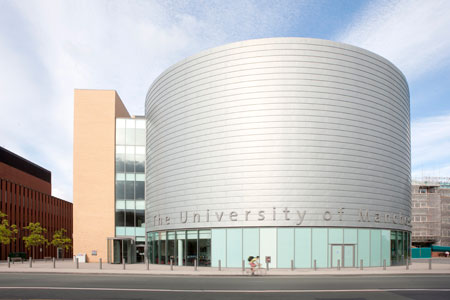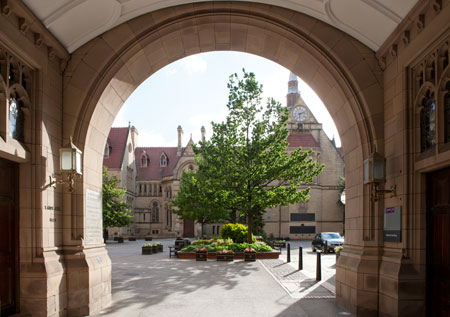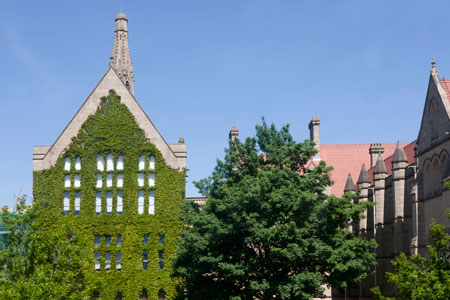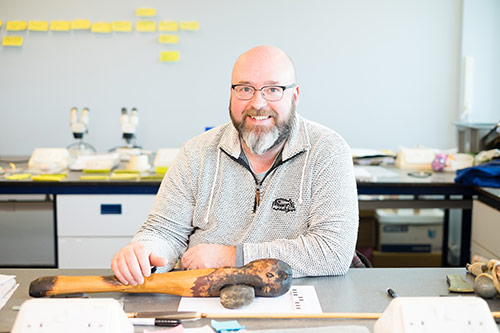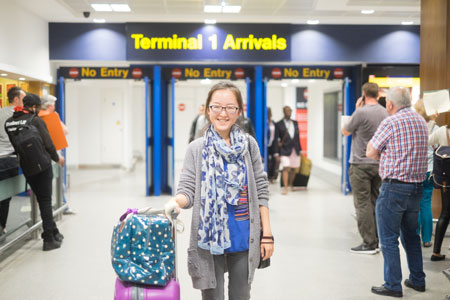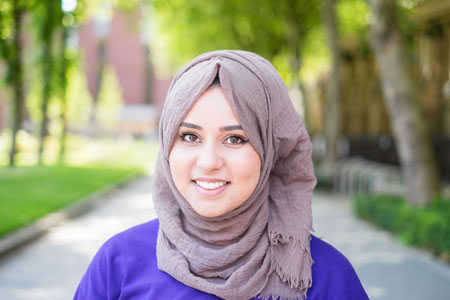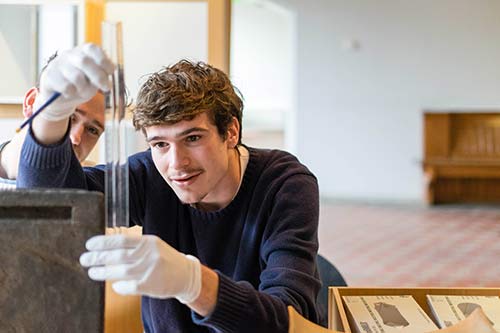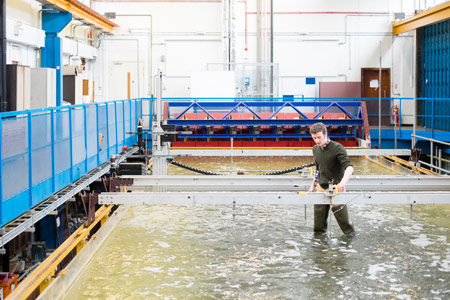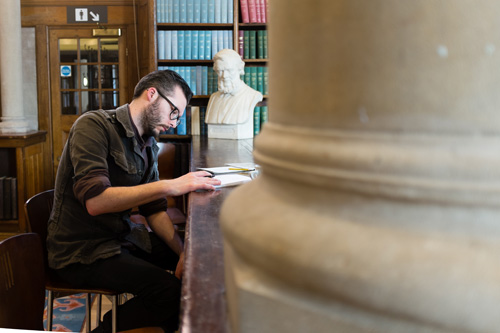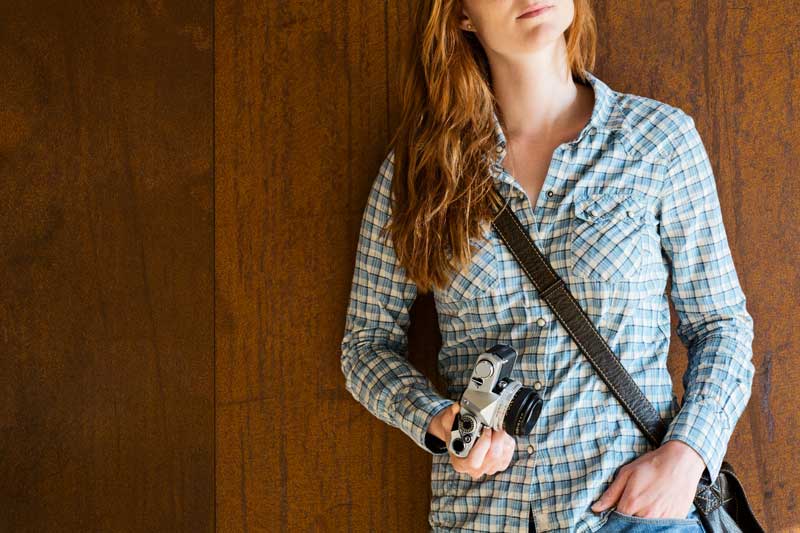
Photography guidelines
Our photography gives an eye-catching glimpse of life at the University, portraying our activities and achievements in a clear and evocative way.
Our imagery must establish an emotional connection with our key audiences by creating interest, generating excitement and inspiring brand loyalty.
Key characteristics
Five key characteristics define our photography:
1. Straight and natural looking
Visually, this is the characteristic that defines our imagery. Vertical and horizontal lines within the image must appear straight and have no perspective distortion. Using normal lenses with a focal range of 35mm–70mm produces a result similar to that of the human eye, creating a natural look with less distortion.
The angle of the camera should always be at the eye level of the subject to ensure an engaging and honest aesthetic. Making the subject face directly into the lens, shooting the subject side on or looking directly down on them will emphasise the idea of straightness throughout the image.
2. Monochromatic and elements of strong colour
Choose locations that are light and bright, and that have an overall monochromatic colour. Aim to place all objects within this, especially subjects that share a same colour palette. Or for striking effect, place a subject with a contrasting colour within a monochromatic landscape for real impact.
3. Reportage
Our photography must feel honest and real. It should capture a natural moment in time, not one that looks forced or staged.
Our photos should always use natural light where possible, or light sources found within the environment. This conveys a sense of honesty and the feeling that the image has just been captured rather than staged. If additional light is required, it should fit with the natural surroundings as much as possible.
4. Wide and cinematic
This is more about how the image is finally used. Think big and bold, and give images the space to have an impact. Use one rather than five. Wide, landscape images stand out and compliment our design style. The large banner images on the University website and the landscape orientation of the 2016 Undergraduate Prospectus are good examples.
Let the way the photograph will be used help determine how it is taken. For example, position the subject to the right, and leave negative space on which to overlay text.
5. Point of view
Offering a modern twist to the reportage look, point of view shots give us an unexpected yet familiar perspective, placing the viewer close to the heart of the action.
Categories
There are three categories that make up our imagery content.
Action shots
Natural, real – the decisive moment. Our action shots capture a person engaging with their environment. In this type of shot the emphasis is more often on the action rather than the person, although the relationship is symbiotic.
Environment
Where the subject is an environment or building, aim to show it at its best, but honestly. Don’t be afraid to focus on details; our research spaces and learning areas are the sum of their fantastic parts, so as well as capturing sweeping facades, look for extreme close-ups and everything in between.
Use a tilt-shift lens to eliminate wide-angle lens distortion and control perspective when photographing buildings.
Portraits
We have outlined three ways in which to create a distinct yet unified style of shooting people's portraits across the University.
Style 1: Direct -The predominate aspect of this style of portrait will be the subject positioned face-on looking direct into the lens. The majority of images will feature the subject centred with the eye-line across the top horizontal on a rule of thirds guide.
Feel free to explore different compositions, especially to create negative space for use in publication spreads or web banners where you would need to overlay text. Utilising this style, puts the originality of the person at the forefront, but choosing the right location is key.
Not only does it look unique and unified, it feels contemporary and conveys honesty.
Style 2: In action – less formal in its look, the in action portrait builds on the reportage style of capturing a moment. It should make strong use of the person’s environment, focusing on the subject they’re being photographed in relation to, for example their line of work.
Style 3: High concept Impactful, striking. The high concept image will often involve some form of set design, or at the very least strong art direction in which to pull visual elements together to convey a theme. This style allows the photographer to break the rule of using natural looking light, utilising flash for full dramatic effect.
All portraits though, must share the common theme of being taken at the eye level of the subject, not looking up or down on them.
